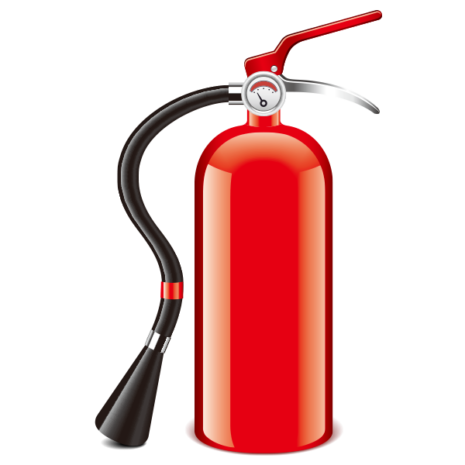Introduction
The aim of this toolbox talk is to increase staff awareness of the types of fire extinguishers. Including what type of fires each extinguisher can be used for.
The use of regular toolbox talks, if done effectively, will significantly improve the safety culture within your organisation. This will increase the safety awareness of the workers, and as a result reduce the likelihood of accidents and unsafe occurrences.
Legislation references
- Health & Safety at Work Act 1974
- The Regulatory Reform (Fire Safety) Order 2005
Types of fire extinguishers
- Water
- CO2 (Carbon Dioxide)
- Foam
- Power
- Wet chemical
Water
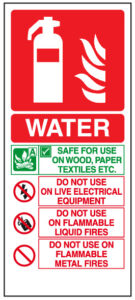
Water fire extinguishers are not suitable for electrical fires.
Water extinguishers are suitable for:
- Carbonaceous fires
- Paper
- Wood
- Textiles
CO2 (Carbon Dioxide)
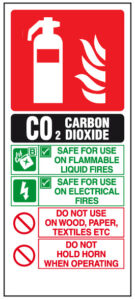
Carbon dioxide fire extinguishers are particularly suitable for electrical fires. They are also suitable for flammable liquids.
Foam
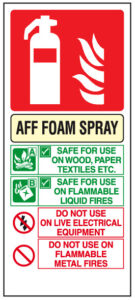
Foam fire extinguishers are suitable for:
- Wood
- Paper
- Textiles
Specialist training is required for using foam extinguishers on flowing liquids and liquid fuels.
Powder

Dry powder fir extinguishers are suitable for:
- Flammable liquids
- Solvents
- Petrol and other fuels
- Metals
- Wood
- Paper
- Textiles
- Electrical
Wet chemical
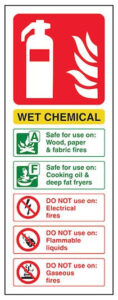
Wet chemical fire extinguishers are specially designed for use with cooking oil fires, such as cooking fats and veg / olive oil.
Table of fire extinguisher uses
| Fire type | Combustible | Water | CO2 | Foam | Powder | Wet chemical |
|---|---|---|---|---|---|---|
| CLASS A |
Solids (e.g woords, plastic, paper) |
✓ | ✗ | ✓ | ✓ | ✗ |
| CLASS B |
Flammable liquids (e.g solvents, paint, fuels) |
✗ | ✓ | ✓ | ✓ | ✗ |
| CLASS C |
Gases (e.g butane, propane, LPG) |
✗ | ✗ | ✗ | ✓ | ✗ |
| CLASS D |
Metals (e.g lithium, magnesium) |
✗ | ✗ | ✗ | ✓ | ✗ |
| Electrical |
Equipment (e.g computers, servers, TV's) |
✗ | ✓ | ✗ | ✓ | ✗ |
| CLASS F |
Cooking Oils (e.g cooking fat, olive oil) |
✗ | ✗ | ✗ | ✗ | ✓ |
| Examples of businesses that mey need this type of fire extinguisher: | Schools, hospitals, shops, apartment blocks. | Offics, server rooms. | Schools, offices, hoterls, shops, hospitals, apartments. | Outdoor locations, garages, welding workshops, forecourts. | Kichens, canteens, restaurants. | |

